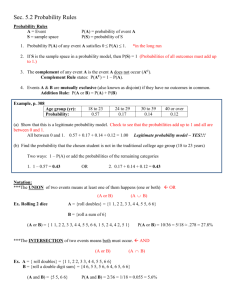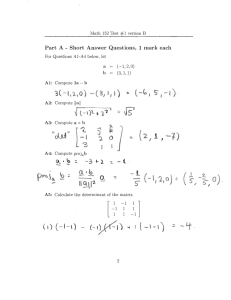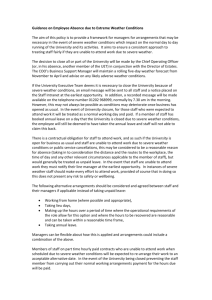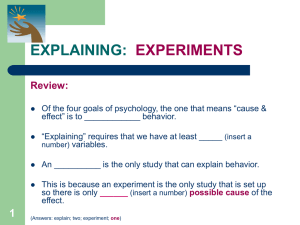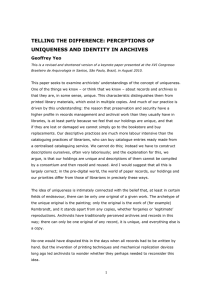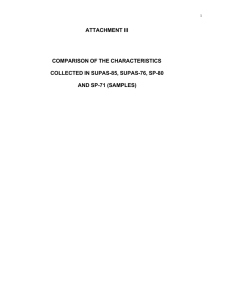13 Lesson 2
advertisement
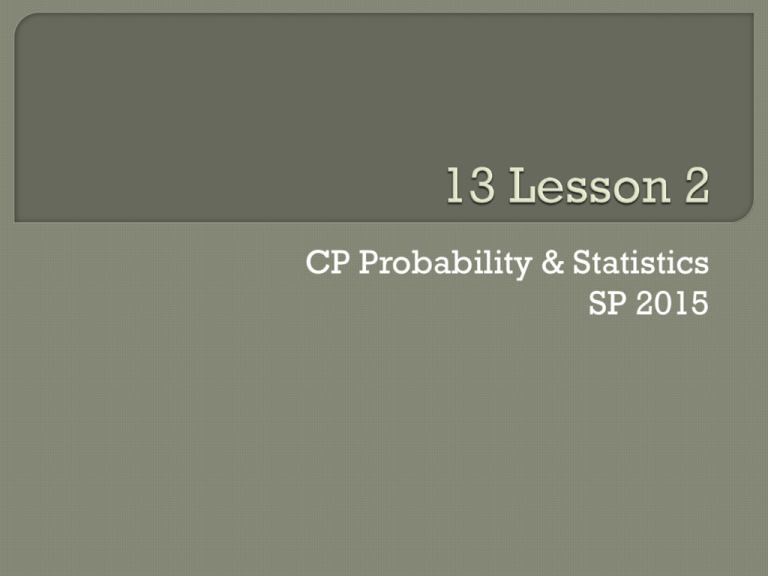
CP Probability & Statistics
SP 2015
Our eventual goal in this course is to go
from the random sample to the population.
The theory that allows for this transition is
the theory of probability.
Random Phenomenon
We know what outcomes could happen, but
not which outcomes will happen.
The list of possible outcomes of a random
experiment must be exhaustive and
mutually exclusive.
Examples:
Experiment
Flip a coin
Roll a standard die
Outcomes
Heads, Tails
1, 2, 3, 4, 5, 6
Probability of an event A, P(A), is a number
between 0 and 1 that identifies the
likelihood that event A happens.
Example: Rolling a standard die
P(1) = 1/6
P(2) = 1/6
P(3) = 1/6
P(4) = 1/6
P(5) = 1/6
P(6) = 1/6
Trial
Single attempt (or realization) of a random
phenomenon
Outcome
The observed result of a trial
Independence
(informal definition)
2 events are independent if the outcome of 1
does not influence the outcome of the other.
Event
Collection of outcomes
We typically label events so we can attach
probabilities to them
Notation: bold capital letter: A, B, C, …
Sample
Space
The collection of all possible outcomes
Outcomes
O1, O2, . . .
Sample space
S
Thus, in set-theory notation,
S = {O1, O2,. ..}
Sample Space: S = {1, 2, 3, 4, 5, 6}
Trial: Roll the die
Outcome: “3”
Events:
Outcome is an even number (one of 2, 4, 6)
Outcome is a low number (one of 1, 2, 3)
P(1) = 1/6
P(4) = 1/6
P(2) = 1/6
P(5) = 1/6
P(3) = 1/6
P(6) = 1/6
Note: The sum of probabilities for
a Sample Space is always 1
Law
of Large Numbers
As the number of trials increases, the longrun relative frequency of repeated
independent events gets closer to the true
relative frequency
(the observed probability gets closer to
the calculated/theoretical probability)
If event A has m outcome and event B has n
outcomes then the number of possible
outcomes for
A or B is m + n
A and B is mn
n! = n(n-1)(n-2)…(1)
Example: 5! = 5 * 4 * 3 * 2 * 1
Number of possible arrangements when
choosing r items from a set of n items and
ORDER MATTERS
n!
P
n r
(n r )!
Number of possible arrangements when
choosing r items from a set of n items and
ORDER DOES NOT MATTERS
n!
C
n r
r !(n r )!
When the outcomes in a sample space are
equally likely to occur then:
number of times A occurs in sample space
P( A)
number of items in sample space
The number of distinct permutations of n
objects where n1 of the objects are
identical, n2 of the objects are identical, . .
. , nr of the objects are identical is found
by the formula:
n!
P
n r
n1 !n2 !.....nr !
How
many different arrangements can be
made using all of the letters in
MISSISSIPPI
M 1
I
4
S 4
P
2
11!
11 P11
4!4!2!
11 10 9 8 7 6 5 4! 11 10 9 8 7 6 5 11 10 3 1 7 3 5
34650
2!4!4!
214 3 21
111111



